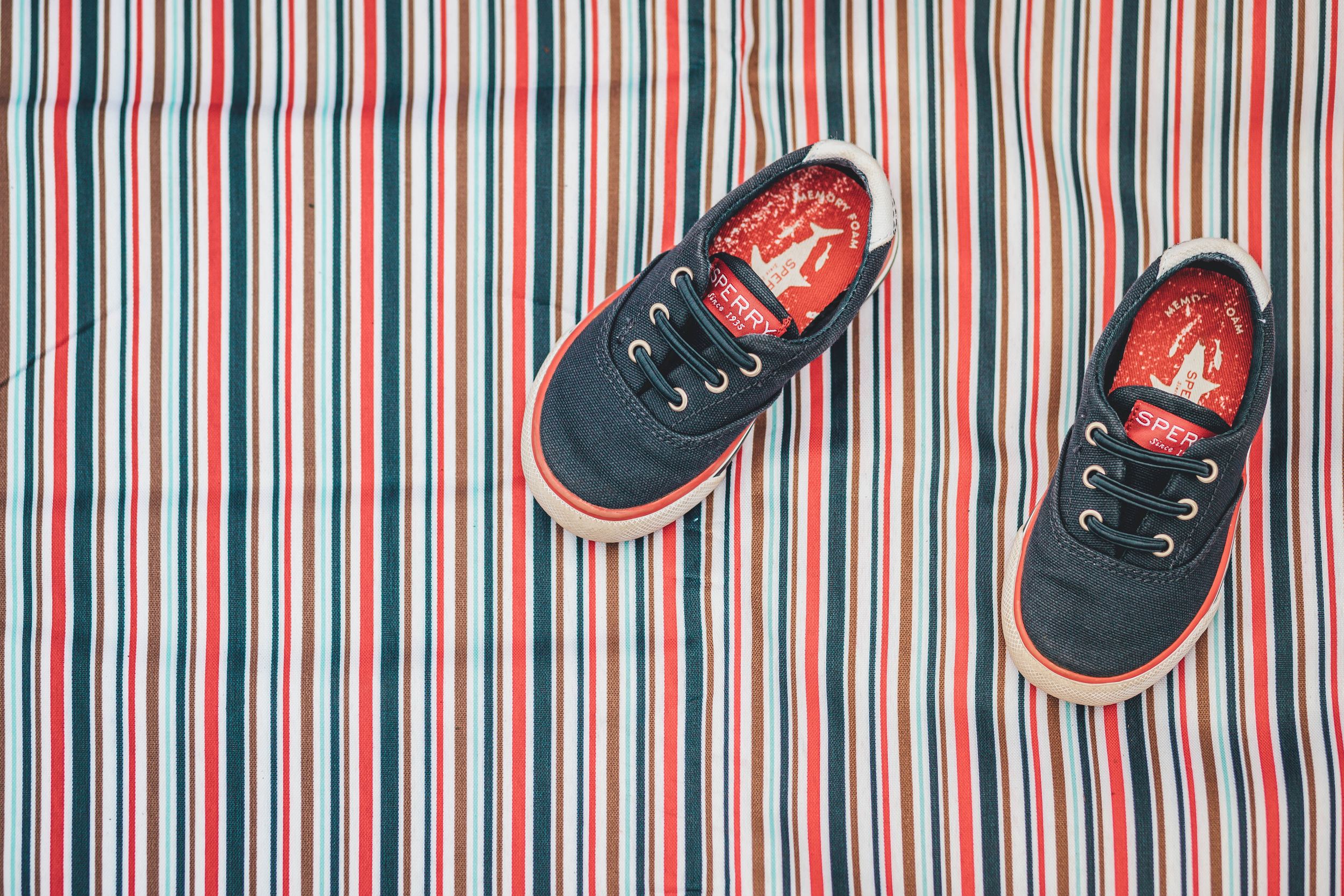WHEN,WHY and WHAT guide to children’s shoes
Buying children’s shoes is a more important mission than you thought. Buying the right shoes now can prevent many foot health problems later in your child’s life. Let your child be barefoot as much as possible and follow these tips in this children’s shoe guide when purchasing shoes for your child.
INFANTS
WHEN: Infants do not need shoes. Occasional shoe wearing doesn’t hurt, but it is recommended that the baby isn’t even wrapped in a tight blanket that might restrict wiggling toes.
WHY: The more they can wiggle their toes, the better for future foot health. The foot and toe muscles need to become developed and the toe movement should not be restricted.
WHAT: When you see a baby bend those toes down, and spread toes up, like they do, think “great, we are on the way to happy healthy feet”.
Tip: use cute socks instead, and get a pair of special shoes just for special occasions and outings. But remember with socks too – don’t use too small ones, keep them toes wiggling!
TODDLERS
WHEN: Pre-walking shoes should only be bought for occasional fun wearing, not for every day use. From a parenting point of view it is good to have the babies used to shoes, but the pediatricians recommend that the time to buy the first pair isn’t until your child starts taking the first steps.
WHY:The feet are still developing and need all the excercise they can get. Even for first-walkers it’s still best to let the child to use shoes only outdoors, and when indoors, let the muscles get a better workout without the shoes.
WHAT: Get your child’s feet measured and purchase shoes that fit well.
Look for shoes that are flexible, roomy, and simply made. Leather, or canvas are the best materials, anything that breathes.
The sole flexibility is important for healthy foot development, and you can test it by bending the heel and the toe towards each others. The arch of the shoe needs to be flexible, not stiff and preventing bending feet. The shape of the toe should be rounded.
Tip: Invest on a good pair of leather shoes and stay away from strappy plastic sandals, the pointed toe cowboy-boots are a big no-no! Canvas shoes are a great second choice, as long as they offer enough wiggle room for toes, and have flexible rubber soles.
KIDS OVER 3
WHEN: Check how your child’s shoes fit Monthly.
WHY: Kids grow in spurts, sometimes shoes might get too small in a month, sometimes they can last even 9 months. The shoes should have a little bit wiggle room, and not too tight.
WHAT:When purchasing shoes, try if you can fit your thumb inside the shoes, behind your child’s foot – if your thumb can fit there nice and snug, the size is right.
Tip: Don’t look at the price tag on shoes, and don’t use hand-me-downs. Choose shoes that fit and support the healthy growing of your child’s feet. Rather buy one good pair than two poor ones.
CHILDREN DO NOT NEED ARCH SUPPORT
Arch support = the bulge in the inner sole
WHEN: Never say never, but at least most children under 7 do not need arch support. Loud and bold truth.
WHY: Most babies seem to have flat feet, but it’s only because they have baby fat, and the fat covers the natural arch. The arch (the curve in the foot) will develop later, and by buying shoes that already have the arch support inside the shoe (you can find it in the inside sole, it’s the elevation of the bottom), will just prevent the arch from developing! Most children naturally have flat feet until they are over three years old, and it’s nothing to worry about.
WHAT: If your pre-schooler or older child plays sports, and needs more supportive sports shoes, do not let him wear the sneakers with arch support constantly. Sports shoes are for sports, walking shoes are for walking and dancing shoes are for dancing.. you get the picture. There are also great sneakers that don’t have the arch support.
Tip: If you think your child might suffer from flat feet, let him/her walk barefoot as much as possible, for most children, the problem corrects itself. And then start making sure in the future shoe purchases that you follow the tips in this guide to children’s shoes.
The writer of this children’s shoe guide is a mother of three. She has sold children’s shoes for several years, and has gotten formal training for it in Europe.

